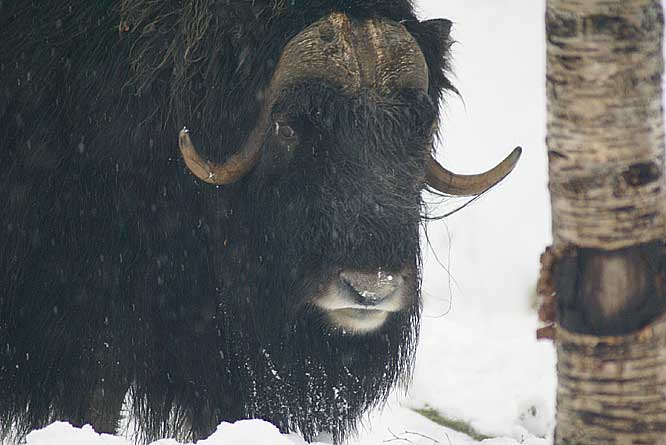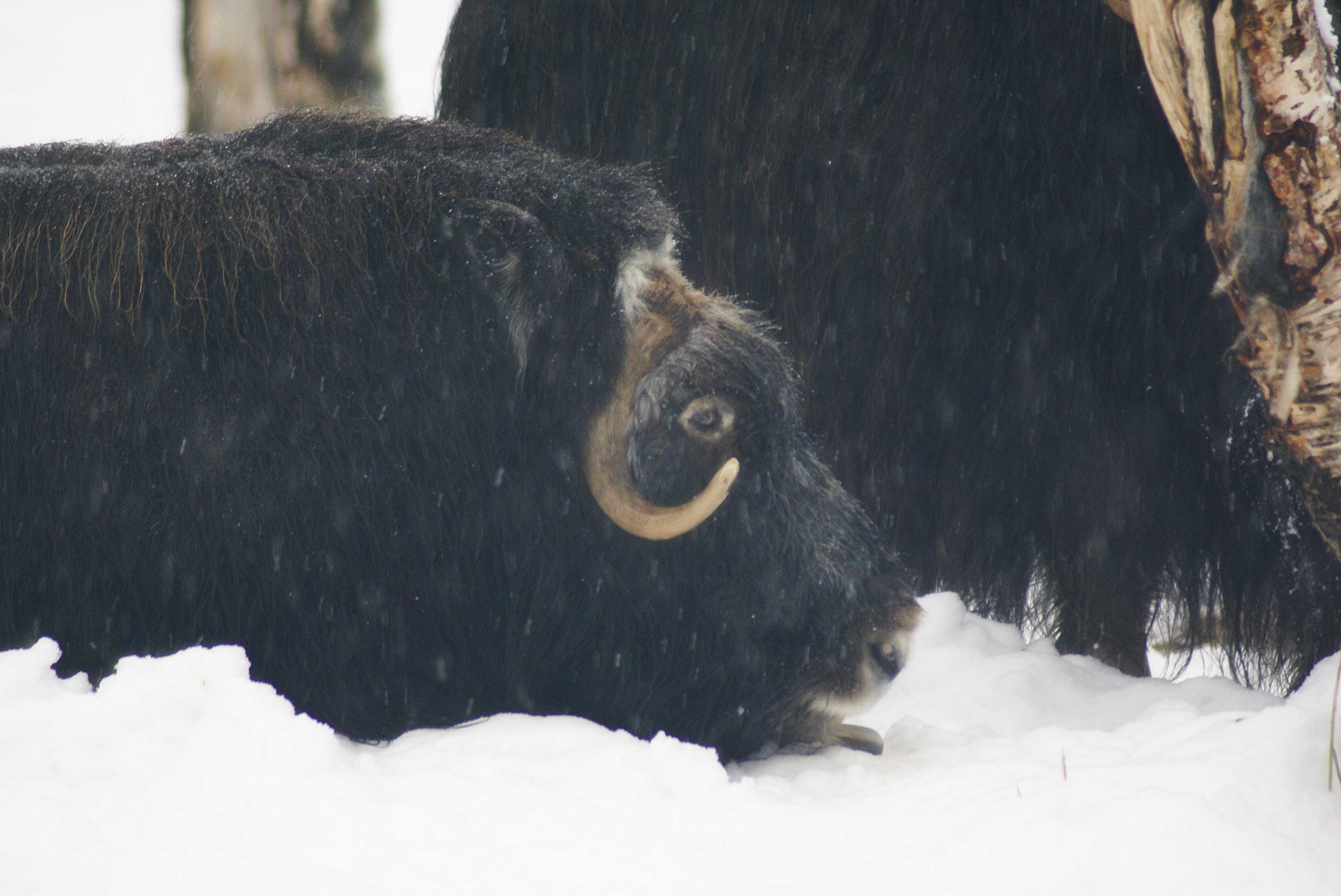Musk Ox Moskus at the Polar Zoo Norway
As you go up the main path from the river in the Polar Zoo head towards the Reindeer enclosure. On your right you will pass the red deer. Next to them is the large Musk Ox enclosure built inside a wood.

If you are lucky enough to visit the Polar Zoo when it has snowed you will see them in their natural habitat. They are built to take cold winters of the Arctic.
The Musk Ox scientific name is Ovibos moschatus. They are large hairy cattle-like animals that look like they belong in the ice age grazing the tundra with mammoths. Musk Ox are more closely related to sheep and goats than to cows. They are spread across the Arctic polar region's treeless tundra from Alaska, northern Canada to Greenland. The strong musky smell of the bulls that is omitted during the mating season in summer gives them their name. This musk is used to attract females
There are 2 known subspecies of Musk Ox, Greenland Musk ox (Ovibos moschatus wardi) also known as the White-Faced Musk ox which are found in Greenland and the Canadian high Arctic and the Barren Ground Musk ox (Ovibos moschatus moschatus) which are found on the Canadian mainland. Musk Ox are more closely related to sheep and goats than to oxen. The closest relative of the Musk ox is the Takin, a goat-antelope found in the Eastern Himalayas. Musk Ox became extinct across much of their range in Europe and Alaska, largely as a result of overhunting. They are now being reintroduced.

The Musk Ox have a heavy bony plate across their forehead which the males use when fighting other males over mating rights. Yaks of Central Asia and Musk Ox have the longest fur of any animal. Some of the hairs in the outer coat are almost 100 centimetres long. Their hairy coats hang almost to the ground. To cope with the intense cold winters they have an insulated woolly undercoat.
They can stay in the Arctic all year round, surviving temperatures of -70 degrees centigrade. Musk Oxen are social animals and live in herds of around 10 -20 animals. In winter herds join together and can contain over 70 animals.
Musk Ox can be identified by their pronounced shoulder hump. Both male and female Musk Ox have broad, curling horns. Males are larger than females. Musk Ox have very few natural predators because of their huge size but young Musk Ox are vulnerable to predators like wolves and bears when under a year old. If danger is spotted by a member of the herd adults quickly gather into a tightly packed circle animals, all facing outwards, with the young hiding away in the centre.
Predators like wolves, brown bears and polar bears are presented with a wall of tough heads and horns. The large males will charge swinging their horns back and forth at their attackers. If the Musk Ox are made to run that is when the young ox are in danger. They live for over 20 years.
Travel books

